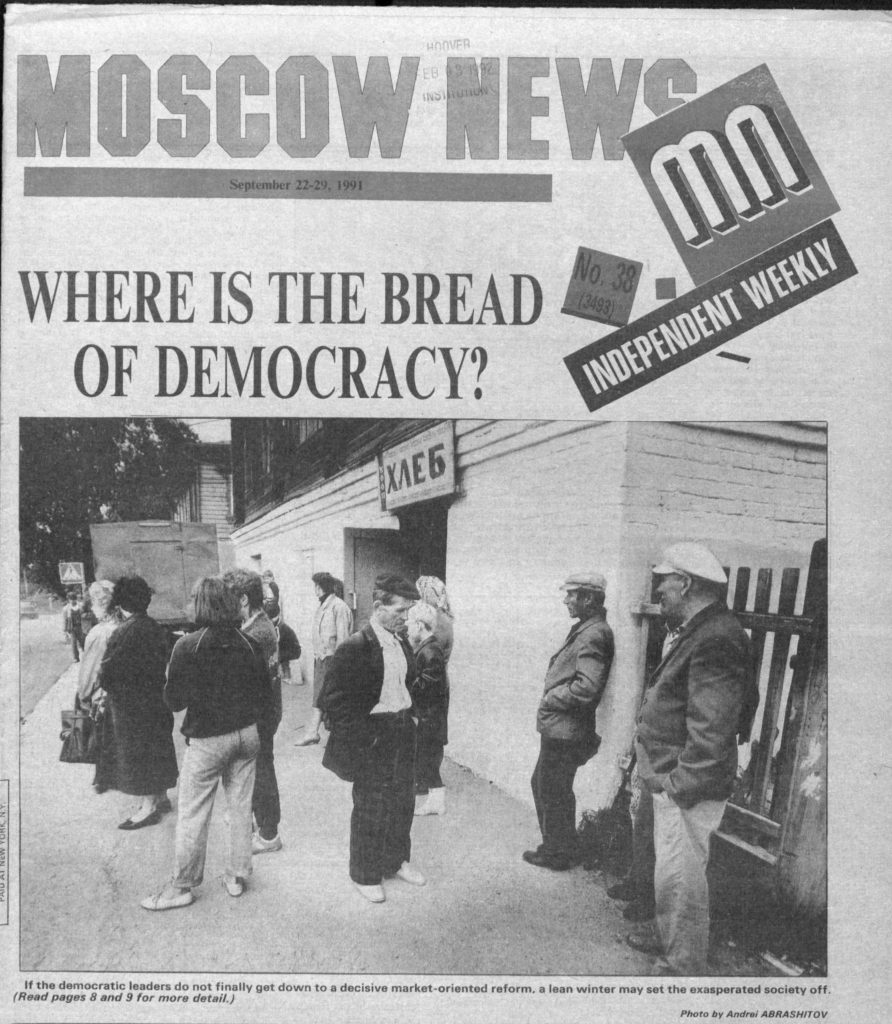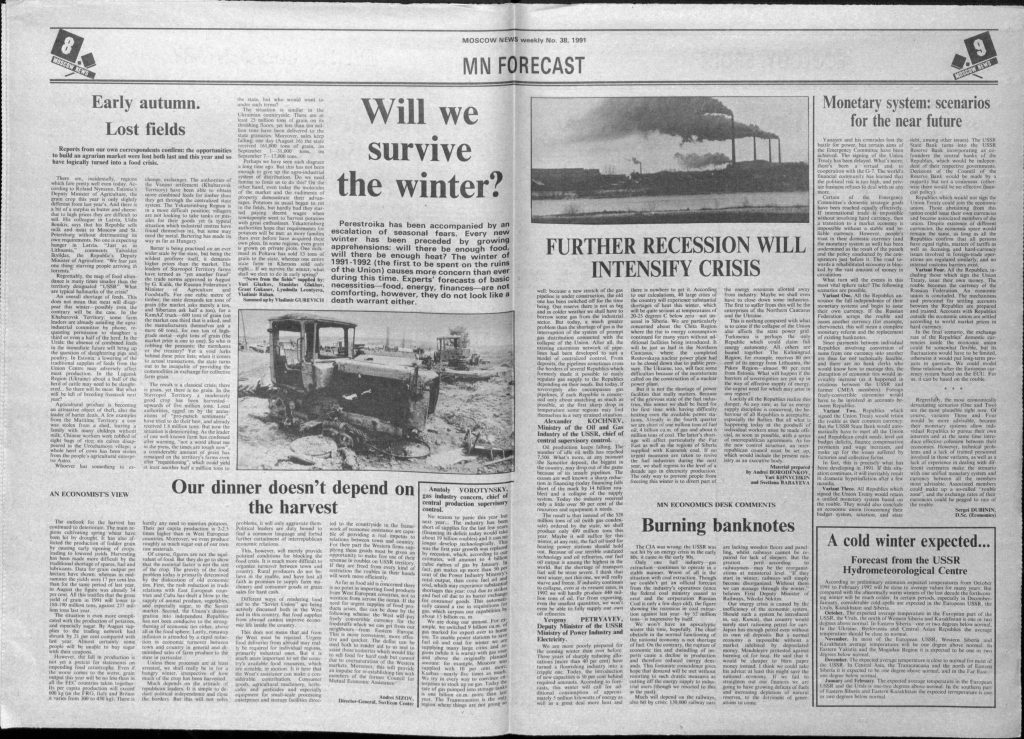By Anastasia Treat
By mid-September 1991, not only were people dealing with the weakening of the Soviet Union, because of the worsening economic situation they also still had to worry about surviving the winter.
The September 22issue of The Moscow News opened with an interview with Grigory Yavlinsky, Russian economist and politician. The interviewee asked questions of Yavlinsky surrounding the discussion of the draft of the Treaty of the Economic Union of Republics by the USSR State Council. Although the draft was preliminarily approved, Yavlinsky was not prepared to say that the economic union of the Republics was going to become a reality any time soon. He believed the final version of the Treaty would be ready in six weeks and having “to prepare a package of agreements between individual members of the Union, adopt a plan of anticrisis action, and put together an executive team enjoying the full trust of the members of the Union” would take another four months. He then stated that the economy would take another 18 months to achieve a stable financial recuperation. He also expressed that there was a possibility of the Treaty never being fulfilled and the economy entering a severe crisis, leaving life even more difficult and treacherous for everyone.
In other pages of the newspaper, the ever-increasing dilemma is further discernable through the reports of poor harvests and dwindling gas and oil production. In the previous year and continuing into 1991, reporters highlighted the insufficient crop harvest. Autumn arrived early, the weather cooled at a quicker rate, and many crops were not able to withstand this. There were also reported droughts during the spring which further escalated the problem. Although there was an overall shortage of feed, meat was still abundant at the time. There were even reports of people stealing cows and other livestock to feed themselves. But what would happen if the crop shortage occurred next year and the livestock population significantly dropped due to eating? The Moscow News answered that a famine would not be far off.
The situation was further complicated by the ongoing dissolution of the USSR. The economy of the Soviet Union had not been strengthened by the disintegration of the Union into republics and the reduction in trade between the Soviet Union and East European countries and Cuba also greatly affected the food shortage. Not only was food shortage a problem though, but there was also an energy crisis. Coal extraction was in recession by 52 million tons and the nearing winter was predicted to come with energy and heat shortages.
The Moscow News reported these crises with a simple yet terrifying headline: “Will we survive the winter?” Most articles answered the question with a yes for the winter of 1991, but they cautioned about the ever-increasing food and energy shortages and the disastrous consequences that would affect the country next winter if economic cohesion and revival was not sought-after by not only the Soviet Union but the surrounding Republics as well. The solution put forward was the Treaty of the Economic Union of Republics, which according to Yavlinsky, would take 4-6 months to be established and always had the opportunity to fall through. No wonder that the people were distraught and concerned for their future and their ability to survive with such warnings as these.
Anastasia Treat is a sophomore majoring in Russian, East European, and Eurasian Studies.
Works Cited:
Moscow News Digital Archive, 22 Sep. 1991, https://dlib-eastview-com.proxy.lib.miamioh.edu/browse/doc/49796633.


